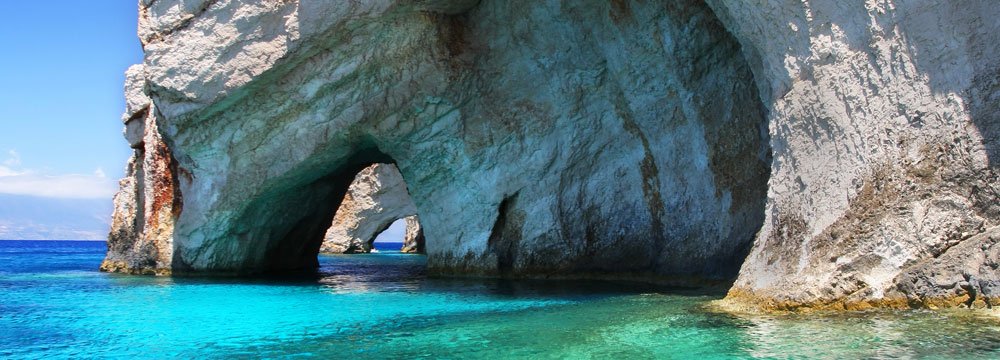Solomos Square
The central square of the city is named after the National Poet of Greece, Dionysios Solomos, and is decorated with an imposing statue of him. It is surrounded by a number of important buildings such as the Byzantine Museum, the church of Agios Nikolaos at the mole and the Cultural Centre of Zakynthos. Locals and visitors love evening walks there.
Church of Agios Dionysios
Agios Dionysios is the Patron Saint of the island and, as such, the biggest church in town is dedicated to him. The construction lasted from 1925 to 1948, based on the plans of the architect A. Orlandos. Its architectural style is basilica with three aisles and its bell is similar to that of Saint Marcus in Venice.
The temple is a famous attraction for locals and visitors and inside lays the sacred body of the Saint. The most important item in the temple is the silver shrine containing the sacred relic, a work of art by D. Bafas (1829).
The temple is a famous attraction for locals and visitors and inside lays the sacred body of the Saint. The most important item in the temple is the silver shrine containing the sacred relic, a work of art by D. Bafas (1829).
Cultural Centre and Public Library of Zakynthos
Located next to the church of Agios Nikolaos at the Mole the building of the Cultural Centre of Zakynthos and the Public Library are found. The Public Library is literally a piece of art and one the most important public libraries in Greece as its collection includes over 50.000 books. The library also hosts a valuable collection of photographs and the historic archive of Zakynthos.
Church of Agios Nikolaos at the Mole
Constructed in 1561, it is one of the few remaining Venetian buildings and the oldest in the entire Solomou Square. Agios Nikolaos is a very important church as Dionysios (the patron saint of the island) had served here.
Navagio
The most famous sight on Zakynthos Island is Navagio, located on the north-western part of the island, also called the smugglers’ cove. On the beach there is a shipwreck. The story is that this ship was carrying cigarettes illegally and was pursued by the Coast Guard. Because of the bad weather it collided to the shore and, thus, it half sunk. The only access is by boat from Agios Nikolaos port, but there is also a panoramic view from the balcony set above it, on the mountain slope. To get there, you must take the road to Volimes village and, from there, follow the signs to Navagio.
Blue Caves
These caves that were discovered in 1897 are located on the north east side of cape Skinitis, almost 30 km north from Zakynthos. They are named after the light blue colours of the waters and can be accessed by boat from both Zakynthos and Agios Nikolaos. The best time to visit is in the morning when the sun rays are strong, forming a magical scenery full of shadows and reflections.
Byzantine Museum of Zakynthos
The Museum was founded in 1953 and is located in Solomos Square in Zakynthos town centre. Its collection includes Byzantine paintings and exhibits from the 12th to the 18th century, Greek and Byzantine sculptures, wooden sculptures from the 16th century and paintings from famous local artists.
Mylanio Naval Museum
It was founded by A. Mylonas and it is located in Tsilivi, 7 km north from Zakynthos town. Its exhibits include water paintings which reveal the evolution of navigation in Greece and also a collection of Byzantine boats from the dawn till the collapse of the Empire in 1453.
D. Solomos - A. Kalvos Museum
The building is located in the square of St. Marcus in the town centre and its collection hosts personal items of the National Poet Dionisios Solomos, the famous Greek poet Andreas Kalvos and of other great local personalities and artists, like Alexander Romas and Gregory Xenopoulos. Traditional costumes from the Venetian era, furniture, photographs and portraits are also exhibited. The grave of D. Solomos is found here.
Christmas in Greece is an experience in itself as it is a holiday celebrate...
Read more ›








 BACK TO LIST
BACK TO LIST